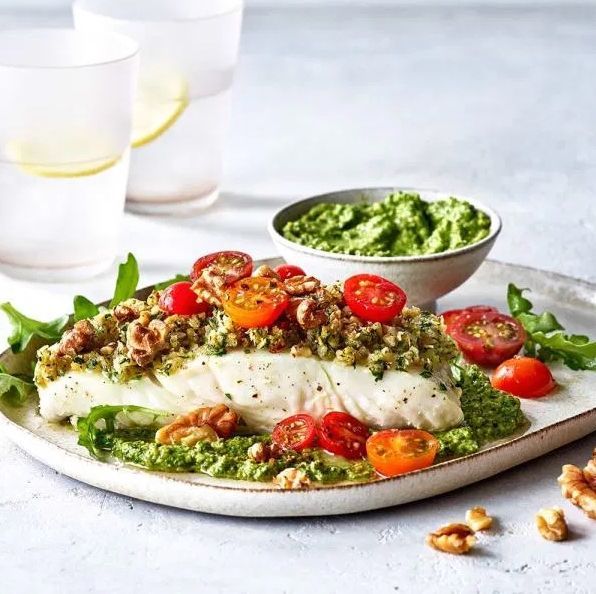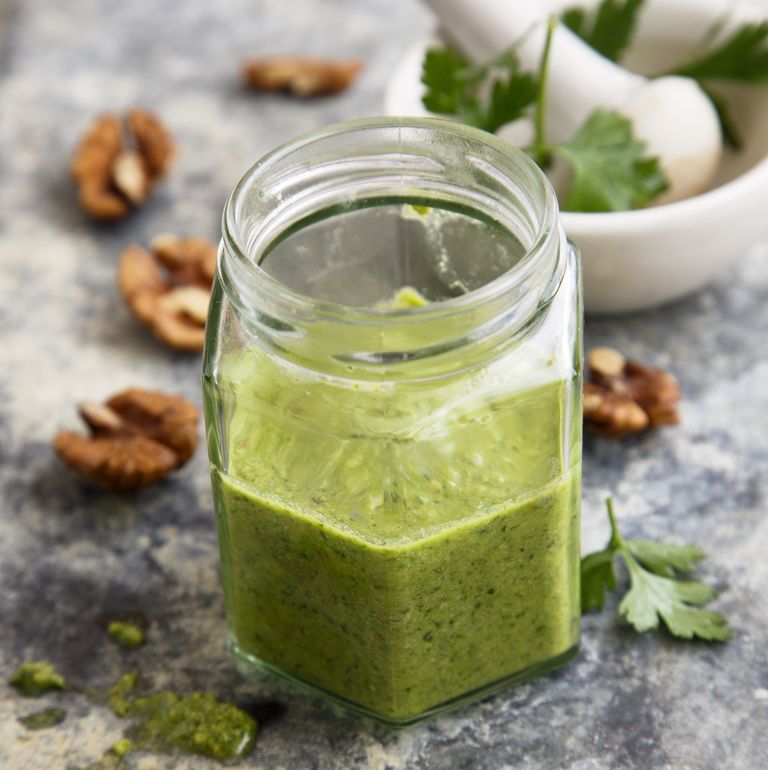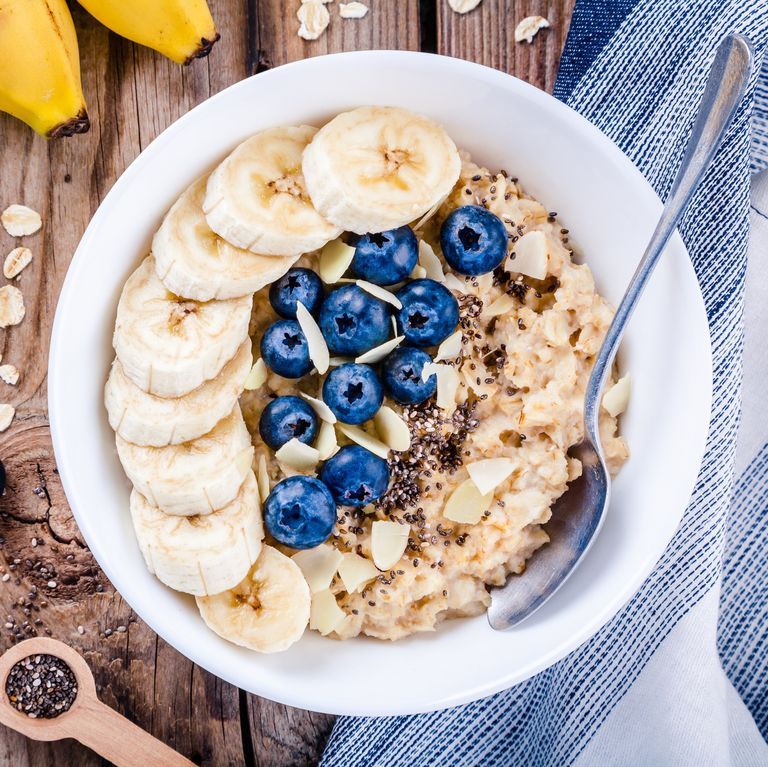
Protein is key for getting the biggest bang for your workout buck. It provides muscles with the building blocks they need to repair themselves after a hard lift or run—and get stronger for next time, explains nutrition expert Rebecca Ditkoff, MPH, RD, CDN. If you’re doing challenging workouts most days, aim to get around 1.2 to 2 grams of protein per kilogram of body weight daily, the Academy of Nutrition and Dietetics recommends. For a 150-pound woman, that nets out to between 82 and 136 grams (about what you’d find in a cup of chopped grilled chicken, a cup of cottage cheese, and a half cup of chickpeas.) People who are sedentary or moderately active need around 0.8 grams of protein per kilogram of body weight.
Those numbers might seem hard to hit, but they’re actually totally attainable, especially when you consider that protein can do its job better when you spread your intake over all of your meals and snacks, Ditkoff explains. If you’re reaching for the same old protein sources day in and day out, though, things can get a little dull. That’s where the genius ideas below come in—they prove you can use everyday ingredients in fresh ways to reach your daily protein benchmark.
1. Trade breadcrumbs for walnuts.
 California Walnuts
California Walnuts
Try using toasted, chopped walnuts as a coating for chicken or fish, or as a topping for casserole dishes. Alternatively, experiment with a fifty-fifty mixture of breadcrumbs and nuts, recommends Ditkoff. Each quarter-cup serving of walnuts delivers 4 grams of protein, plus 2.5 grams of omega-3 fatty acids. And honestly? The rich, nutty flavor and crunchy texture is delicious. Seriously, we’re drooling over this walnut-crusted halibut recipe.
2. Pump up pancake batter with cottage cheese.
 Jeff KauckGetty Images
Jeff KauckGetty Images
Pancakes aren’t typically considered protein-packed, but they can be if you trade the milk in your fave recipe for cottage cheese. A cup of low-fat milk has 8 grams of protein, but the same amount of low-fat cottage cheese has a whopping 28 grams. “You can sub them one for one without drastically changing the texture,” Ditkoff says.
3. Dip fruit into a dessert hummus.
 bhofack2Getty Images
bhofack2Getty Images
Chickpeas, which serve as the base for hummus, boast 6 grams of protein per half cup. If you typically make (or just enjoy) the spread with savory ingredients like lemon and garlic, it’s time to expand your hummus horizons. Ditkoff suggests blending a can of drained, rinsed chickpeas with maple syrup, vanilla extract, and cocoa powder to taste, plus a few tablespoons of water for a spreadable consistency. The chocolatey dip pairs perfectly with fruit or graham crackers. Yum!
4. Flavor dishes with pesto.
 Mariha-kitchenGetty Images
Mariha-kitchenGetty Images
Herbs and olive oil might be the main ingredients, but you can’t make pesto without nuts, which give the delicious sauce a protein punch, Ditkoff says. This dead-simple recipe for walnut-parsley pesto is delicious on pasta, as well as slathered on sandwiches and wraps. It can also be used to add extra flavor and protein to grain and veggie bowls. Walnuts have more protein than pine nuts (the classic pesto nut) so you’ll get more bang for your buck with every bite, Ditkoff explains.
5. Stir egg whites into your oatmeal.
 wmaster890Getty Images
wmaster890Getty Images
They’ll add around 12 extra grams of protein to your morning porridge—without changing the flavor or adding extra time to breakfast prep. Add half a cup of egg whites (the kind that comes in a carton are fine!) to half a cup of rolled oats and microwave for three minutes, stirring after the one-minute mark and every 30 seconds after that, Ditkoff says.
6. Bulk up soups with quinoa or chickpea pasta.
 los_angelaGetty Images
los_angelaGetty Images
With 8 grams of protein per cooked cup, quinoa is queen of the whole grains in our book. And if you’re not adding it to soups or stews, consider it a total missed opportunity!Its mild, nutty flavor works well in everything from minestrone to chili. Ditkoff recommends adding a half cup up to a full cup of cooked quinoa to your steaming bowl of soup right before serving (to prevent it from getting mushy). For recipes that call for standard wheat pasta, swap in chickpea noodles instead. We adore Banza’s top-notch texture and nutritional profile, which serves up 25 grams of protein and 13 grams of fiber per 3.5-ounce serving.
7. Make a sandwich wrap out of eggs.
 I_rinkaGetty Images
I_rinkaGetty Images
Omelettes are thin and round before they’re folded, and they have a fairly neutral flavor—just like tortillas. The most notable difference? They’ve got more than twice the protein—around 12 grams in an omelette made of two eggs. Start by cooking two beaten eggs in a skillet, creating a wide disc shape, just like you would for breakfast. (Tip: A teaspoon of flour can help strengthen the consistency.) But instead of folding the flat omelette over in the pan, pop it onto a plate, Ditkoff suggests. Then add your favorite fillings, roll like a traditional wrap, and eat.
Source: Read Full Article